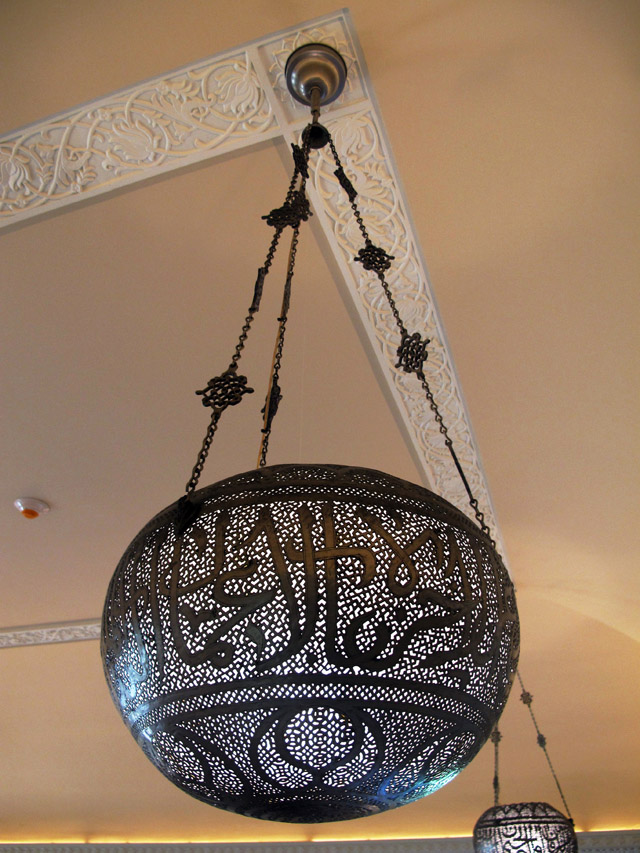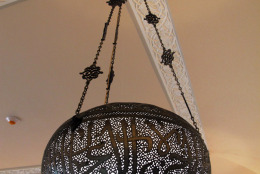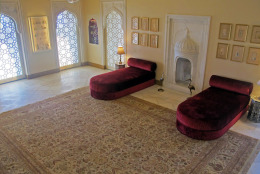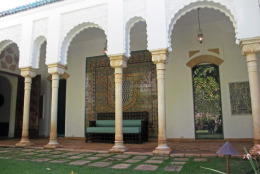



















AUDREY McAVOY
Associated Press
HONOLULU (AP) — American tobacco heiress Doris Duke fell in love with Islamic art and culture during her honeymoon through the Middle East and Asia in 1935.
So much so that she commissioned a bedroom and bathroom inspired by the Taj Mahal, the mausoleum in India built by a 17th century emperor for his favorite wife.
The marble- and mirror-lined private living quarters will be opened to the public for the first time this weekend in Hawaii after years of extensive repairs and restoration.
Duke, who died in 1993, never explained what prompted her to build a house with architectural elements of Syria and India in the oceanfront home she built in Honolulu or to collect items such as 13th century Persian tiles.
Deborah Pope, executive director of the home that’s been functioning as a museum of Islamic art since 2002, said Duke was drawn to cultures different from the elite East Coast society of her youth. She also loved things of beauty.
“I think she’s an aesthete,” Pope said, sitting on a red settee in Duke’s bedroom.
The bedroom is located at the end of an open-air passageway extending from the main courtyard of the home that Duke called Shangri La. A perforated marble door, or jali, made by artisans in India opens to a tiled room. Light pours from more jali doors facing the ocean and garden.
The highlight, however, might be the bathroom lined with marble that’s been inlaid with precious stones in the shape of tulips, anemone and other flowers.
Most of the rest of the 14,000-square-foot house, including the grand foyer and living room, have been open to the public and scholars for more than a decade. But the bedroom and bathroom — called the Mughal Suite after the period when Islamic emperors ruled what is today India, Pakistan, Afghanistan and Bangladesh — was closed while the roof was repaired.
Sugata Ray, a University of California, Berkeley professor, said the bath is important for scholars studying an early 20th century revival in Mughal arts and craft techniques.
The 18th century earrings and necklaces on display in the suite are unique because few of Duke’s contemporaries bought and preserved such things.
“It gives a sense of the diversity of Islamic art,” said Ray, who specializes in the study of South Asia and Islamic art. “It’s not just about masterworks but about everyday objects of the Mughal elite: jewelry, textiles and things that were really not fashionable in the 1930s as a collector’s item.”
Ray noted Duke later began buying masterpieces — such as a 13th century Persian tile piece called a mihrab — as she began to see her home as a center for the study of Islamic art.
Duke commissioned the Mughal Suite while in India during her 10-month honeymoon. She initially envisioned it as a section of her mother-in-law’s estate in Palm Beach, Florida, but decided to build her own place in Hawaii after stopping in the islands on the way home.
Pope said she wanted the room to capture the moment when Duke, as a 22-year-old, has a profound experience in India while traveling outside the U.S. and Europe for the first time. The Shangri La team of curators and conservationists consulted 1930s photographs to restore the rooms to what they looked like when the home was first built.
“I thought there was something valid in showing what makes this young woman fall in love with the Islamic world at such an early age and undertake a project of this scale,” Pope said.
Duke died at the age of 80 in Los Angeles. She established the Doris Duke Foundation for Islamic Art in her will and stipulated that her home be open to the public and scholars.
Copyright 2014 The Associated Press. All rights reserved. This material may not be published, broadcast, rewritten or redistributed.







